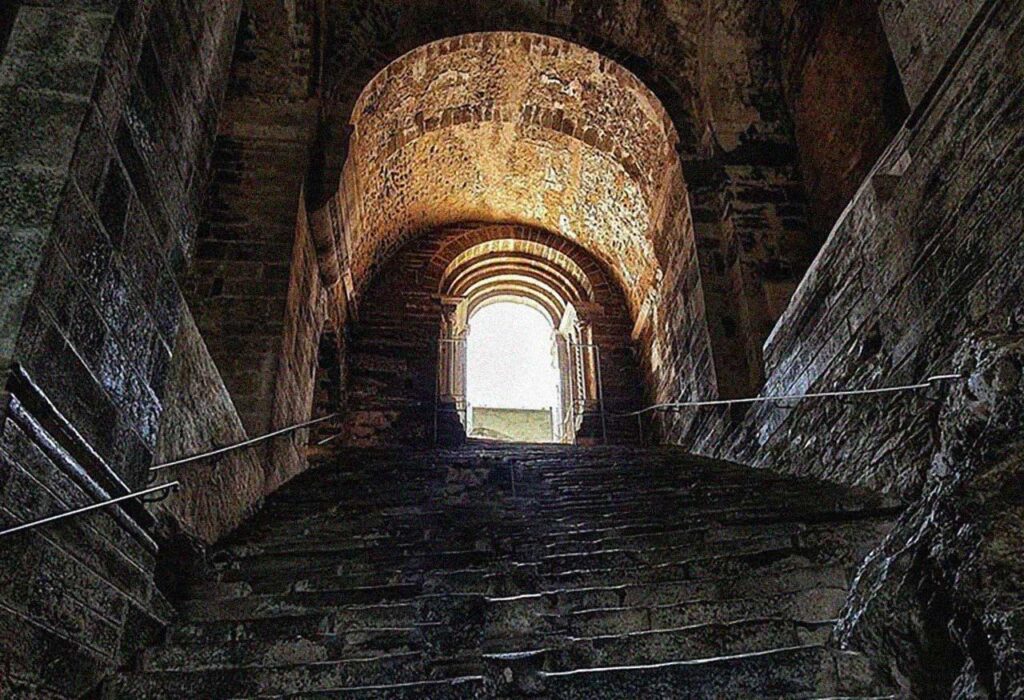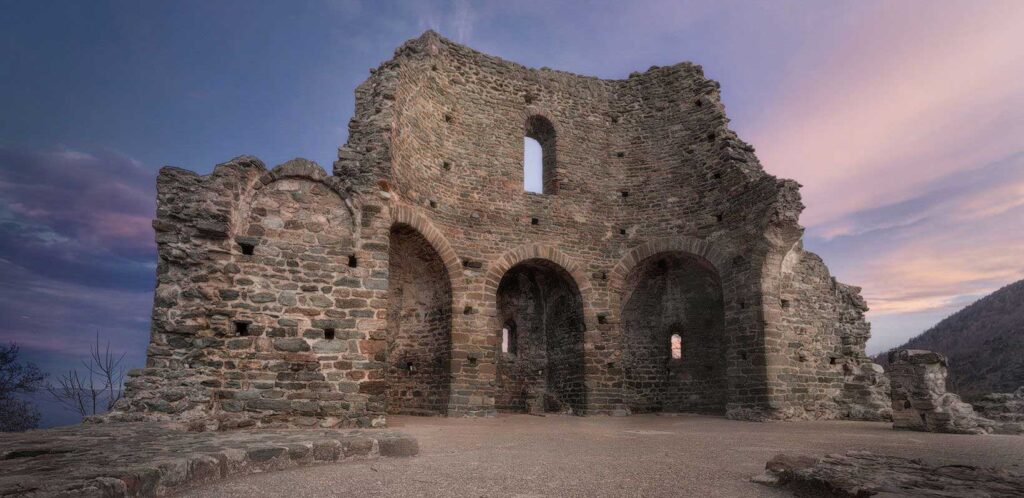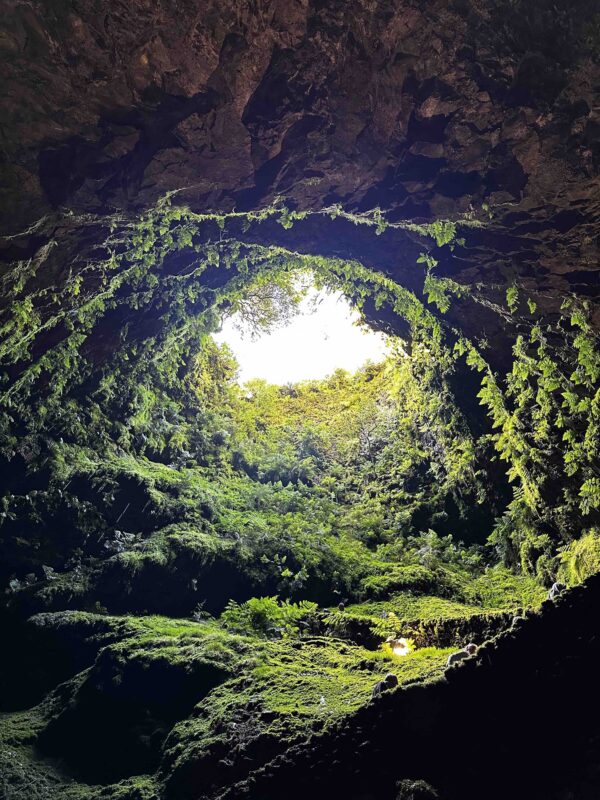The austere building captures our attention, emerging, stone by stone, from the top of Pirchirian Mount, standing out the surrounding landscape, massive and threatening. We are climbing up for the path, attracted by the considerable size and fame of the abbey. We pass through one after another, the portals, where the chaotic nature contends its space with geometric architecture, up to reach the main nave of the Church.

We remains to observe the inside, while we prepare the detection tools, contemplating the expectation to find ourselves studying a place that is crossed by a very important Ley-line

The plant is massive and compact and describes a square shape with three Navates, completely defined by the aquifer lines.
The Western work is a closed uneven environment that follows the curve of the Ley-Line; Main entrance is placed on the southern side, along a secondary aisle. The eastern side is populated by semi-circular chapels: solution of continuity of the naves. Here the Ley-Line intersection takes place, which crosses the main nave (not in the center, but off-axis, irregularly moved towards the north), with a slope line that runs throughout the transept. At this layer, a structure corruption is observed, partially collapsed and visibly restored in the late nineteenth century. Often water sliding ruins the building walls above; furthermore, the whole apse is outside the restraining forces of the buttresses, therefore more subject to instability.At quantitative reading we find 18,000 Å to energy lines intersections. We would have expected very higher values, considering the position and number and quality of the forces at stake. We deepen the study and we realize that the other Ley-line is nothing but a line of faults, off-axis. Nothing special, therefore, compared to other buildings of the period which also present a less intense telluric phenomena.

Leaving, we find a billboard illustrating the surveys performed by the ‘Dowsing for Life’ association. A quick check to the notes taken during the relief confirm the same observation performed by colleagues eight years earlier, with the only difference that these were able to access a borrowing part, at the chapel to the right of the altar, detecting a line completing the perimeter on the southern side.
We continue towards the exit, discussing expectations disappointed by detecting a relatively mediocre energy of the Church. The discovery, then, happened.

Abandoning the abbey walls we reach a clearing and come across a ruin: Monk’s Shrine.
The small building is almost entirely collapsed, but the central lobed plant and the structure dating (perhaps) to the 11th century remains readable. The name comes from the hypothesis that there was the abbey monks cemetery. We make surveys and find the intersection, in the center, of two line of faults and two vein of water that perfectly describe the building plant design.The instruments reading shows the value of 55,000 Å to the exact center of the plant. Given the high concentration of energy intersections, it does not surprise the collapse at the end of the seventeenth century. Further historical research refer to traditions wants the building at the exact place of a previous pagan temple.

Conclusions: The architectural quality of the abbey and the workers evident esoteric wisdom, combined with the evident knowledge of the telluric energies involved and to the fact that the whole architecture originates from these, leaves no room for doubts.
While considering the needs to build a fortified space with the advantage of the upholstery and to protect and defend a sacred space, it is not clear why exclude from the perimeter surrounded by walls the much more precious ‘Monk’s Shrine‘. Furthermore, the octagonal plant would recall the tradition of baptistery, while this is indicated as a burial place of the monks, therefore a precluded space for the worship of the faithful. The very form of the minor building refers and gives reference to the energy lines that hosts, but without celebrating them, but rather hiding them. It should also be considered that allocating a burial place greatly lowers the energies, even to zeroing them.It seems we are in front of the umpteenth mystification perpetrated by the Catholic Church that has operated a spectacular distraction machine (the abbey) to conceal a true sacred place (the pagan temple spot) with really peculiar and considerable energy. The nature of the ‘Ley-Line’ is also proved to be the a simple line of faults.
Further research and insights will follow.



